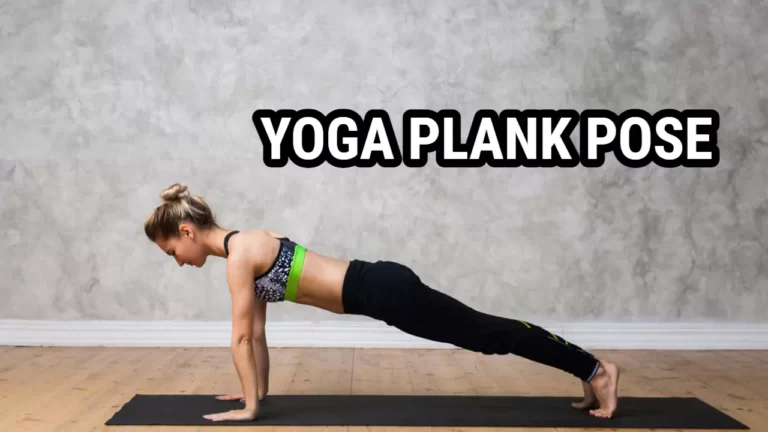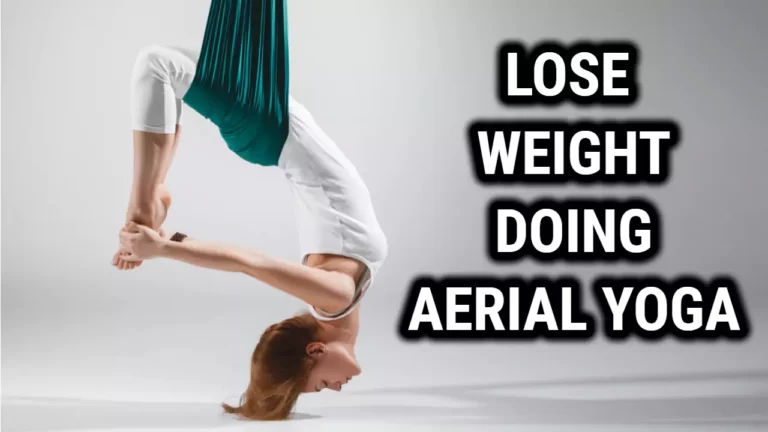Is Iyengar Yoga Good For Weight Loss?

Have you ever considered Iyengar Yoga for weight loss? It’s a popular form of yoga that can be tailored to fit any individual’s needs. In this article, we’ll be exploring the potential benefits of Iyengar Yoga for those looking to shed some unwanted pounds.
In the last two decades, Iyengar Yoga has gone from being an obscure practice to one of the most widely practiced forms of yoga. This is due in part to its focus on alignment and therapeutic applications. As such, it has become popular among those seeking a holistic approach to managing their body weight.
We will also discuss how Iyengar Yoga can be used as part of a comprehensive diet and exercise program. By combining mindful movements with dietary changes, it could be possible to achieve long-term weight loss goals without sacrificing health or happiness. Read on to learn more about how Iyengar Yoga can help you reach your health goals!
Understanding Iyengar Yoga
Do you ever wonder what Iyengar Yoga is? Have you heard of it and wanted to know more? Iyengar Yoga is a type of yoga that originated in India and was developed by B.K.S. Iyengar in the 1970s. It is a form of Hatha Yoga that focuses on precision, alignment, and attention to detail.
Iyengar Yoga utilizes props such as straps, blocks, bolsters, chairs, and blankets to help practitioners achieve correct alignment in poses. The poses are held for longer periods of time than in other forms of yoga and can be adapted for people with different physical abilities.
This allows practitioners to focus on the details of the pose instead of worrying about how long they can hold it.
The practice also emphasizes Pranayama (breath work) and meditation techniques to help practitioners become more mindful and aware of their bodies. With its emphasis on detail and alignment, Iyengar Yoga can be beneficial for both experienced yogis as well as those just starting out their practice.
So if you have ever wanted to know more about this type of yoga, now you have a better understanding of what it is all about!
Benefits Of Iyengar Yoga
Overall, Iyengar Yoga offers a wide range of benefits to its practitioners. From weight loss benefits to improved body strength and mental health, this ancient practice has a wealth of advantages.
One of the primary benefits of Iyengar Yoga is its ability to help with weight loss. By providing practitioners with an effective system for burning calories and toning muscles, it can help individuals reach their desired fitness goals.
Additionally, because it focuses on mindful breathing and movement, it can help individuals become more aware of their bodies and increase their metabolism in the process.
Iyengar Yoga also promotes improved body strength and flexibility. It helps practitioners develop better posture and balance while also increasing muscle strength. This can be immensely beneficial for athletes who need to stay agile as well as individuals who want to keep up with everyday activities such as walking or gardening.
Finally, Iyengar Yoga also offers numerous mental health benefits. Practitioners often experience increased focus, reduced stress levels, better sleep quality, improved concentration, greater self-confidence and more positive thinking patterns. All these factors combined can lead to a happier lifestyle overall.
- Weight Loss Benefits
- Body Strength Benefits
- Mental Health Benefits
- Improved Flexibility Benefits
By providing an effective system for burning calories and toning muscles while promoting improved body strength and mental health benefits, Iyengar Yoga offers many advantages that are sure to benefit any practitioner’s wellbeing in various ways.
Types Of Iyengar Yoga
Iyengar Yoga is a form of yoga that focuses on alignment and precision in poses. It is often used to improve balance, strength, and flexibility while calming the mind
- Pranayama: Pranayama is the practice of controlling the breath through specific breathing exercises. It is an essential part of Iyengar yoga.
- Asana: Asana refers to physical postures. The practice of postures helps to open up the body and develop strength and flexibility.
- Vinyasa: Vinyasa is a type of yoga that focuses on flowing movements. It is often used to transition between postures in a Iyengar yoga class.
- Restorative: Restorative yoga is a type of yoga that focuses on relaxation and rest. It is often used for healing and injury recovery.
- Meditation: Meditation is an important part of Iyengar yoga. It is used to quiet the mind and create a deeper connection with the body.
The various Iyengar Yoga levels range from beginner to advanced, allowing practitioners to progress at their own pace according to their individual skillset.
Iyengar Yoga classes typically involve equipment such as blankets, bolsters, straps, chairs, blocks, and sandbags to help support the body during poses. These props can help with proper alignment and allow practitioners to perform challenging postures safely.
Additionally, there are various styles within Iyengar Yoga such as therapeutic practices designed for rehabilitation or therapeutic benefits; flow practices which focus on developing strength; or restorative classes which focus more on relaxation and meditation practices.
No matter what practitioners’ goals are, they can find an appropriate type of Iyengar Yoga class or practice that suits them best. With its emphasis on precision and alignment combined with the use of props for support, this form of yoga provides benefits for everyone regardless of experience level.
The Role Of Diet In Weight Loss
When it comes to weight loss, iyengar yoga is a great exercise option. It can help tone the body and increase flexibility, both of which are important for overall health. However, for long-term results, diet plays an equally important role.
A combination of exercises like iyengar yoga and healthy eating habits can help maximize weight loss results. Incorporating healthy foods into your diet such as fruits, vegetables, lean proteins, and whole grains can help provide the nutrients needed for energy while also aiding in weight loss.
Additionally, avoiding processed foods and drinks high in sugar or calories can make a big difference in weight management over time.
Creating a balanced approach to fitness and nutrition is key to achieving effective long-term weight loss outcomes. It’s important to remember that no single exercise or food will work wonders on its own; instead, it’s the combination that matters most.
By finding the right balance between iyengar yoga and healthier eating habits one can successfully reach their desired goals when it comes to weight loss.
Benefits Of Practicing Iyengar Yoga For Weight Loss
Iyengar yoga is a great way to lose weight. It can help you become more aware of your body and its needs, as well as improve your posture.
This practice helps you focus on the present moment in a meditative way, and it encourages mindful movement which can lead to weight loss.
The physical movements associated with iyengar yoga are designed to be both challenging and gentle at the same time. In this practice, you’ll learn how to use your breath to connect each pose for a steady flow throughout the sequence of poses.
This type of breathing helps burn calories while toning muscles and increasing flexibility, leading to a healthier body composition overall.
Iyengar yoga also emphasizes alignment and proper form, which can help prevent injury while practicing. This makes it an ideal form of exercise for people who want to lose weight without putting too much strain on their bodies.
The combination of breath work, focused intention, and mindful movement makes iyengar yoga an excellent choice for those looking to achieve lasting weight loss results.
Potential Risks And Disadvantages
As with any exercise, the potential for injury, especially when practicing Iyengar yoga for weight loss, is real. It’s important to ensure all movements are done with proper alignment and breathing techniques.
Poor form or incorrect breathing can lead to injury and long-term health conditions. Additionally, unequal flexibility between the right and left sides of the body can also cause injuries.
For these reasons, it’s essential that practitioners take Iyengar yoga classes with an experienced instructor who can guide them through proper alignment and breathing techniques. Inexperienced instructors who don’t understand how to teach these techniques safely may put their students at risk of injury.
When practiced correctly and safely, Iyengar yoga provides many physical benefits – including weight loss – but should be entered into cautiously. Proper instruction and a commitment to safety should be the highest priority in order to prevent any potential risks and disadvantages associated with this type of exercise.
Also Read: How To Lose Weight From Lower Body With Yoga?
Adapting The Practice To Suit Individual Needs
Iyengar yoga is an adaptable practice that can be tailored to meet individual needs. It is important to understand one’s body type and potential limitations when customizing this type of yoga for weight loss.
Here are 3 ways one can modify the Iyengar yoga practice to better suit their individual needs:
- Modifying poses to accommodate body type – Depending on the body type, some postures may need to be modified or adapted in order to maximize their effectiveness and avoid injury.
- Utilizing props – Props should be used as needed in order to achieve the desired result and make the pose accessible for all levels of practitioners.
- Adjusting the duration and intensity of poses – If a pose feels too difficult, it may be beneficial to reduce the duration or intensity in order to prevent injury or frustration.
No matter what modifications are necessary, Iyengar yoga offers a highly customizable approach that can help individuals reach their health goals without risking injury due to overstretching or incorrect alignment.
By taking into account individual needs and adjusting the practice accordingly, anyone can reap the full benefits of this ancient practice while safely achieving their desired weight loss goals.
What To Expect From A Iyengar Yoga Session
Imagining a traditional Iyengar yoga session can be calming and tranquil. You’ll likely find yourself in a relaxed, warm environment with dim lighting, incense burning, and soft music playing. When the class begins, poses will be used to help you build strength and flexibility while at the same time emphasizing physical alignment for proper form.
The poses will vary depending on the level of the class, but all poses will focus on correct alignment and stability to ensure that no injuries are sustained during practice. You’ll also learn relaxation techniques as part of your Iyengar yoga practice which will help you relax both mentally and physically.
Additionally, you’ll be taught how to use breathing exercises to deepen your awareness of your body and practice meditation in order to achieve an overall sense of balance and wellbeing.
No matter what type of class you choose or the level you’re practicing at, Iyengar yoga is designed to give you a great workout while still allowing you to experience inner peace and harmony within yourself.
With regular practice, not only will your physical health improve but so will your mental well-being. So if weight loss is one of your goals, then Iyengar yoga may be just what you need for a healthier lifestyle!
Effective Combination With Other Exercises
Iyengar yoga is a great way to help with weight loss, but it works best when combined with other forms of exercise. Combining iyengar yoga with weight loss exercises can maximize the effects of both.
For example, combining strength training exercises with yoga can help build muscle while also improving flexibility and balance. Yoga can also be combined with cardio workouts like running or biking to increase the intensity of your fitness regime.
When combining different forms of exercise for weight loss, it’s important to remember that each type of exercise has its own benefits. Cardio workouts provide aerobic benefits that help burn calories, while strength training builds muscle and improves overall fitness. Iyengar yoga provides the added benefit of stretching and strengthening muscles that are often neglected in other forms of exercise.
Therefore, combining iyengar yoga with other types of physical activity is an effective way to maximize your weight loss goals and reach your overall fitness objectives. A balanced approach to physical activity can help you achieve optimal results without overworking yourself or risking injury.
Related Read: Iyengar Yoga Poses: Improve Your Alignment and Flexibility with These Asanas
Conclusion
In conclusion, Iyengar Yoga is an excellent choice for anyone seeking to lose weight. It provides a wide range of poses and postures that can be tailored to your individual needs, making it easier to stick with the practice in the long-term.
Despite its many benefits, though, it isn’t a magical solution; it must be combined with a healthy diet and other forms of exercise in order to yield maximum results.
Surprisingly, however, many people expect far too much from Iyengar Yoga when it comes to weight loss. They think that by attending just one session per week they’ll suddenly drop ten pounds – ironic considering how much effort regular Iyengar practitioners put into their practice!
While yoga can certainly help you shed some unwanted pounds, you should be realistic about what you can achieve through this form of exercise alone.
Finally, while Iyengar Yoga may not be the answer to all your weight loss goals, it’s still an incredibly beneficial practice that has long-term effects on your health and wellbeing. So if you’re looking for a way to get fit and healthy while also enjoying the process – why not give it a try? You never know…you might just love it!





